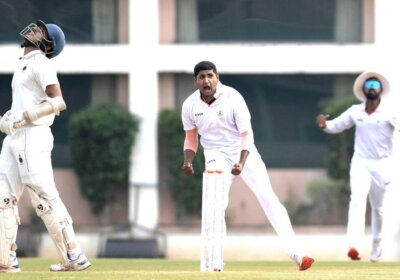The Indian Space Research Organisation (ISRO) will launch the Polar Satellite Launch Vehicle (PSLV-C56) on the 26th of this month. The PSLV-C56 will launch with the DS-SAR satellite and six passengers into a nearly equatorial orbit from Sriharikota’s Satish Dhawan Space Centre. Synthetic Aperture Radar (SAR) is a payload that the satellite is carrying that evolved by Israel Aerospace Industries (IAI). The DS-SAR satellite offers all-weather day and night coverage and 1 m resolution visualization.
ISRO intends to launch PSLV-C56, which will carry seven satellites, on its second mission in July
A significant step in ISRO’s goal-oriented rocketry program. The PSLV-C56 launch, comes just two weeks after the LVM-3 launch.
ISRO’s upcoming launch
The Indian Space Research Organisation (ISRO), which launched the Chandrayaan-3 mission to the Moon a few days ago, is preparing for its upcoming significant launch.
ALSO READ | India Launches its Milestone Chandrayaan-3 Mission
The Polar Satellite Launch Vehicle (PSLV-C56) mission
The Polar Satellite Launch Vehicle (PSLV-C56) mission will get launched by the Indian space agency on the 26th of this month. From Sriharikota’s Satish Dhawan Space Centre, the PSLV-C56 will launch with the DS-SAR satellite. Also six additional passengers will be taken into NEO, or near-equatorial orbit.
Like the PSLV-C55 mission, which took off successfully in April of this year, the PSLV-C56 will start up in its core-alone mode. This PSLV version is a flexible launch vehicle that may get modified under mission requirements. Since it does not utilize solid rocket strap-on motors in the initial stage for added thrust.
The 360 kg DS-SAR satellite
The primary payload, the 360 kg DS-SAR satellite, originated through a collaboration between ST Engineering and DSTA, which stands for the Singaporean government. Synthetic Aperture Radar (SAR) is a payload that the satellite is carrying that evolved by Israel Aerospace Industries (IAI). With the help of this cutting-edge technology, the DS-SAR can offer all-weather day and night coverage. It can also provide visualization at a resolution of 1 m at full polarimetry.
When fully operational, the DS-SAR will support the satellite imagery needs of various Singapore government agencies and provide commercial clients of ST Engineering with multi-modal, higher responsiveness imagery and geospatial services.
Six co-passenger satellites, comprising the following, are traveling with the DS-SAR:
# VELOX-AM is a 23 kg microsatellite for technology demonstration.
# A sophisticated 3U nanosatellite, NuLIoN by NuSpace, enables smooth IoT connectivity in urban and rural areas.
# ARCADE, a prototype satellite. SCOOB-II, a 3U nanosatellite with a technology demonstrator payload.
# A 3U nanosatellite named Galassia-2 will be in low-Earth orbit.
# A satellite called ORB-12 STRIDER emerged with international cooperation.
This mission comes after ISRO successfully launched the Chandrayaan-3 moon mission on July 14, 2023.
A significant step in ISRO’s goal-oriented rocketry program, the PSLV-C56 launch, comes just two weeks after the LVM-3 launch and shows the organization’s dedication to enhancing India’s space technology capacities and aid to international space research.























Leave a Reply